Become a Pistol Instructor
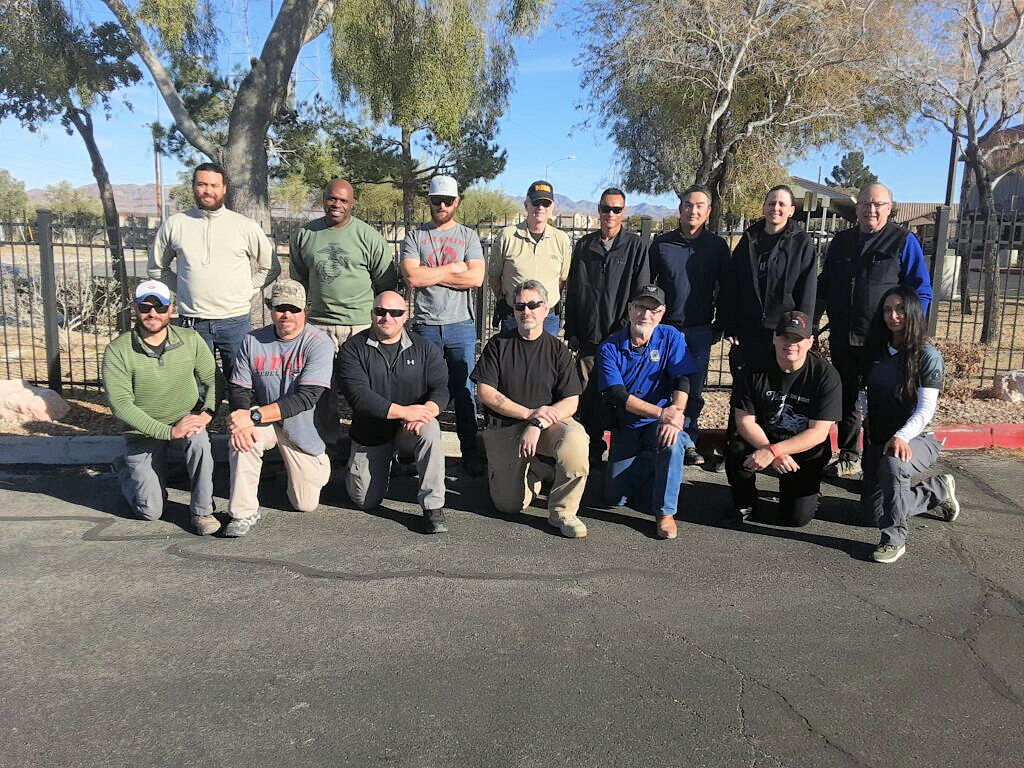
Level 1 Pistol Instructor Training classes are focused on exceeding the minimum state requirements for a Certified Pistol Instructor rating. It addresses the key question, “How to Become a Pistol Instructor”
The class dives into advanced pistol instructor training, teaching concepts, and the use of Modern Gun Training Techniques. We recommend you have core essential knowledge, experience as an NRA or USCCA certified instructor, and two (2) years of teaching experience before attending this class.
If you are not already an NRA or USCCA or equivalent pistol instructor, we recommend attending at least one of these certification classes before attending this class. Our extremely popular Hell Week™ Pistol Firearms Instructor Event provides core pistol instructor training requirements as a foundation for this class.
This pistol instructor class requires that you are in good physical condition to walk and carry all of your equipment if necessary. You must also be able to get up and down from the ground safely without assistance.
Classroom Training
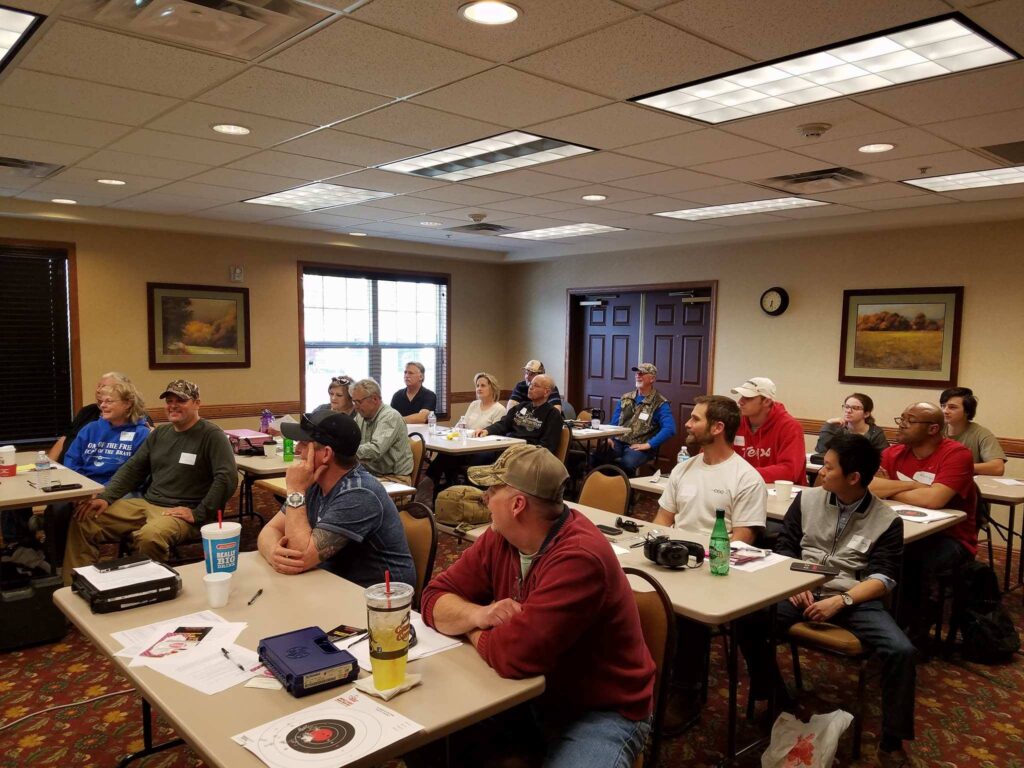
Our Pistol Instructor Training Certification program holds instructors to the absolute highest standard throughout the United States and its territories.
Attendees must meet or surpass class standards which are considered significantly higher than other certification programs.
We understand instructor candidates come from various backgrounds, including Military, Law Enforcement, Security Guards, other certification programs, and other training venues. Our program has years of developmental processes leveraging other training venues. Our pistol instructor class has been uniquely created to combine the best of these training venues to deliver a complete, comprehensive class. The class is constantly being improved with input from other programs and industry leaders.
Range Training
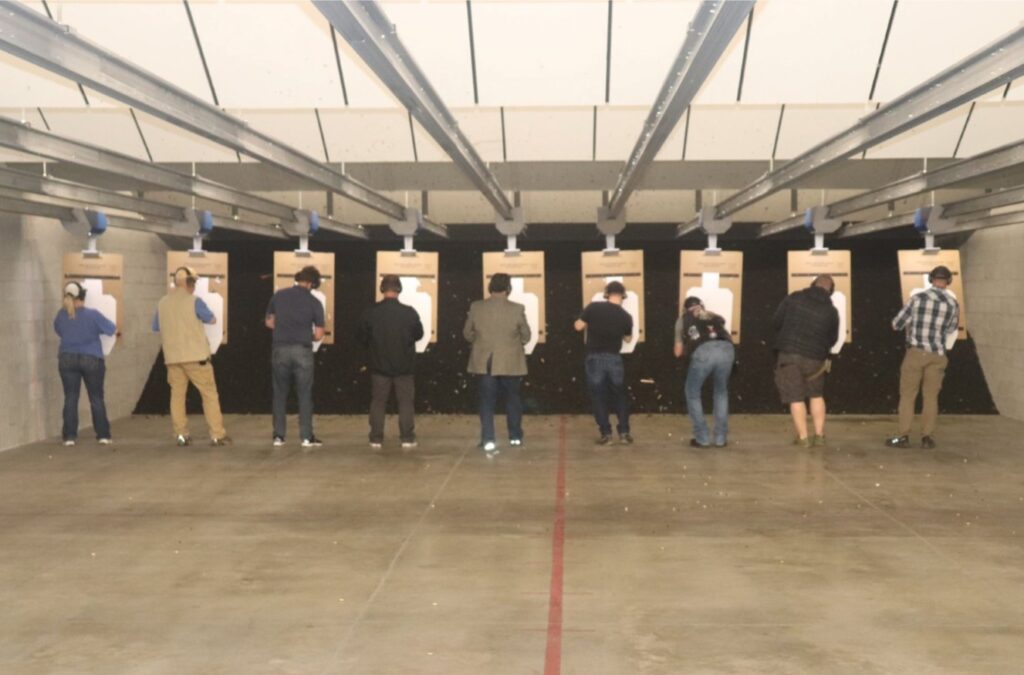
Our Pistol Instructor Training Certification extends to the range. Simple to complex qualification drills measures the instructor candidate’s range of abilities.
This includes shooting skills and observance of all essential range safety protocols during qualification and training.
Instructors must be able to transfer basic to complex firearm shooting concepts to their students. Instructors must be able to explain, demonstrate, and perform the drills the students are expected to perform. As part of the passing requirement for this class, students are asked to evaluate the instruction they received at the range.
Training Curriculum
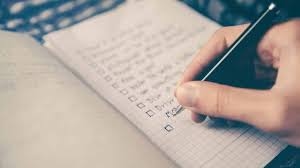
Our Certified Pistol Instructor training goes far beyond the “Basics”. There is more to training than showing someone how to load, cock, shoot and empty their firearm.
Those are the essential fundamentals every instructor candidate is expected to know before attending this pistol instructor training event. This class extends beyond basic instructor skillsets.
The Level 1 Certified Pistol Firearms Instructor program is the gold standard for other programs to beat. Our Certified Pistol Instructors receive over 30 hours of training in all aspects of firearm training.
Pistol Instructor Class
State-specific requirements vary; sometimes dramatically. The list below includes our standard training course but may require additional classes or course alterations based on the state’s specific requirements. In these instances, Level 1 Firearms Training LLC will change or modify our standard pistol instructor course to meet these state-specific requirements.
- Principles of Firearm Training.
- Principles of Learning, Teaching, and Tranfersing Skills.
- Performance-Based Training
- Outcome-Based Training
- Principles of Objective-Based Training.
- Coaching and Skills Development.
- Working as a Training Team.
- Course Structure and Design.
- Lesson Plan Development.
- Principles of safe pistol handling, safety rules, and selecting storage devices.
- The gun owners’ ethical responsibility for securing firearms.
- Why a firearm is considered a tool of last resort.
- Types of pistols, nomenclature, and actions.
- Common causes of stoppages and how to remedy them.
- Ammunition Knowledge – Target versus Self Defense.
- Fundamentals of Marksmanship.
- Target-to-target transitions.
- Shooting from Cover.
- Shooting while Moving.
- Single-hand shooting and manipulations.
- Additional Shooting Positions.
- Correcting Bad Shooting Habits.
- Cleaning and maintaining a pistol.
- Understanding Indoor and Outdoor Ranges.
- Competitive Pistol Training Opportunities.
- More.
Pistol Instructor Candidate Classes Requirements
During training, instructor candidates are held to high standards that exceed other pistol instructor training courses. Instructor candidates are expected to:
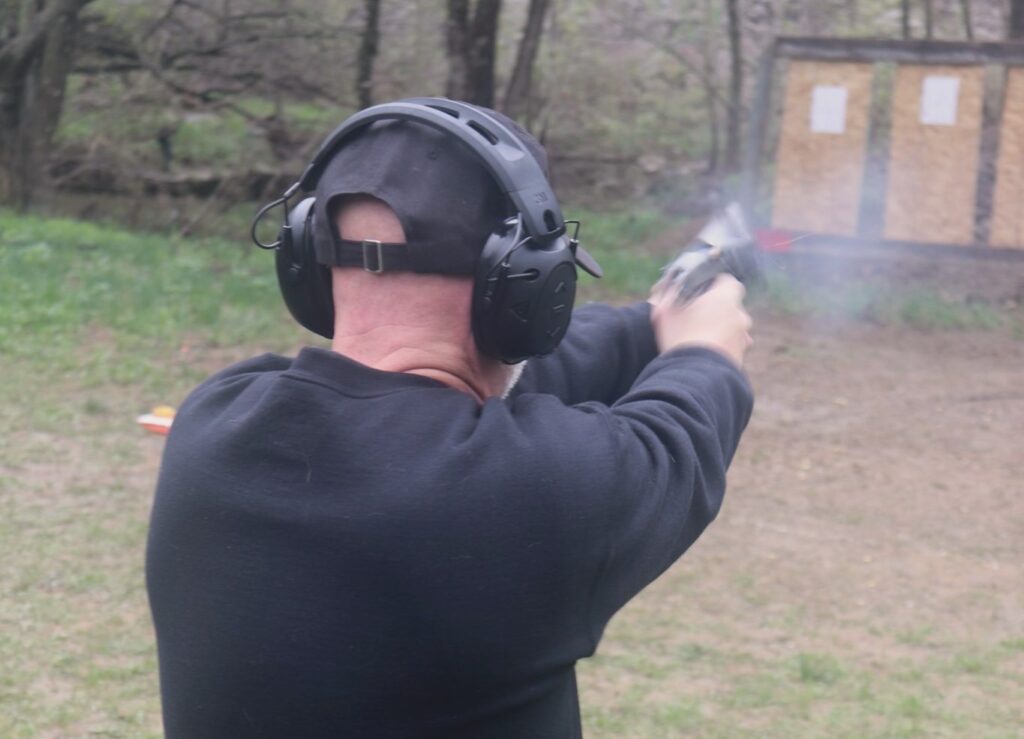
- Adhere to and demonstrate pistol safety protocols.
- Demonstrate skills and proficiency with all pistol types and actions.
- Ability and willingness to learn new skills while being open to retraining bad habits.
- Display the ability to run an indoor or outdoor range with live-fire exercises and drills.
- Display the ability to apply core lesson goals and use them to teach new students.
- Create a course of fire, communicate the expectations, and demonstrate the drill.
- Have a complete understanding of performance-based training and how to determine if training has taken place.
Written Examinations
The Pistol Instructor Training Course is presented in several modules, each building on the previous. All modules and training exercises, along with the student’s demeanor, attitude, and teaching ability, are considered a whole. The Lead Instructor will have the final say regarding the level of achievement the instructor candidate has attained. If necessary, the Lead and/or Assistant Instructors will advise on improving their overall performance in other instructor-level courses.
Feedback Critiques
Our Pistol Instructor Training Course includes live interaction with new, beginning pistol shooters. This examination portion is based on students’ and training instructors’ observations and feedback. This is an essential requirement for receiving certification as a pistol instructor.
Required Equipment
- Single-Action Revolver.
- Double-Action Revolver.
- Semi-Automatic Pistol.
- Appropriate trigger locks for all firearms brought to class.
- Two Revolver Speed Loaders.
- Two Revolver Pouches.
- Three Magazines.
- Double Magazine Pouch.
- Double and Single Action Revolvers can be .22 caliber or larger.
- Semi-Automatic Pistols must be .9mm caliber or larger.
- Pistol or gun cleaning kit for each caliber you will be using.
- Bore snakes are optional; cleaning kits are mandatory.
- Cleaning materials, such as bore brushes, patches, cleaning solvent and oil, etc., are necessary for proper cleaning revolvers and semi-automatic pistols.
- Eight or more snap caps or practice dummy rounds for each caliber you use.
- Belt mounted inside or outside the waist holster; dominant side.
- Sturdy belt of at least 1.5″ wide.
- Shoulder Holster Purse designed for Concealed Carry.
- Closed footwear is suitable for rapid movement, turning, and stopping.
- Casual, comfortable clothing suitable for cover and concealment pistol carry.
- Water, ice chest, or any other suitable beverage for remaining hydrated.
- Baseball cap or other suitable covering from heat and expelled cartridges.
- Wear clothing that blocks spent cartridges from entering between the shirt and body; no V-neck shirts.
- Electronic hearing protection.
- Wrap-around eye protection is rated for shooting activities or shatter-resistant prescription lenses.
- Notebook, paper, a large binder, pens, paper, and highlighters.
Ammunition Requirements
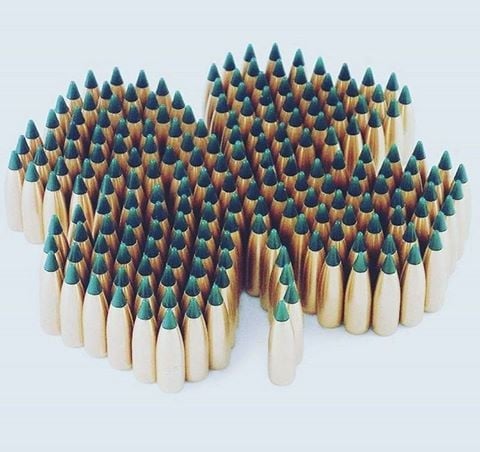
- Ammunition count:
- Approxiamently 600 rounds of ammunition for your primary semi-automatic pistol is needed.
- Approximately 100 rounds of ammunition for your single-action revolver.
- Approxiamently 100 rounds of ammunition for your double-action revolver.
- Ammunition must be factory fresh from the manufacturer – no reloaded ammunition is permitted.
- Ammunition must fit pistols and revolvers brought to class.
- No steel or tracer ammunition is not allowed.
- No green/brown tip, armor-piercing, or surrogate ammunition can be used on steel anytime.
This class requires that you are in good physical condition to walk and carry all of your equipment if necessary. You must also be able to get up and down from the ground safely without assistance.
This is a Three Day Course Which May Exceed 8-Hours Each Day
Pistol Instructor Class Prerequisites:
- Idaho Pistol Classes 102 or Equivalent
- Idaho Enhanced Concealed Carry Permit, or
- Idaho Standard Concealed Carry Permit, or
- Proof of Current Active Military, or
- Official Background Check provided by a state or federal agency within the past 90 days.
Adherence to the primary safety rules must always be followed.
- Keep the Firearm Pointed in a Safe Direction.
- Keep the Firearm Unloaded Until Ready to Use.
- Keep Your Finger Off The Trigger Until Ready to Shoot.
- Know Your Target and Beyond.
- No Drugs, Alcohol, nor Cannabis are Allowed At The Range.
Equipment:
Day 1: Classroom – Friday
- Notepads, pens, paper.
- Laptop or tablet capable of using a wireless hotspot.
- Compatible software for opening Microsoft Office Word, PowerPoint, Excel, and Adobe .pdf files.
- Single-Action Revolver
- Double-Action Revolver
- Semi-Automatic Pistol
Single and Double-Action Revolvers are required; not optional. Our training focuses on instructors being able to explain the most common revolvers, how they operate, and be proficient with all aspects of revolvers.
Semi-automatic pistols are required; not optional. Our training focuses on instructors being able to explain the most common semi-automatic pistols, and how they operate and be proficient with all aspects of semi-action revolvers.
Optional: Pistol red dots and scopes. These will be covered in depth, requiring every instructor to be able to accurately explain and demonstrate intermediate scoping concepts.
- Pistol Benchrest – Commercially made and designed to be used for pistol scoping and testing. We suggest a model similar to the Caldwell Pistotlero Adjustable Rest. (Available on Amazon – you will need one for class).
- Your everyday concealed carry pistol of any caliber, cased, secured, and free of ammunition.
- Holster or other firearm retention devices for your Semi-Automatic Pistols and Revolvers to hold your firearm safely and securely on your person when not in use.
- No Small of Back Holders.
- No Cross-draw Holsters.
- No Ankle Holsters.
- Holster Purse Required; not optional. Preferably capable of holding your daily concealed carry firearm.
- MINIMUM 3-Magazines. One for the firearm and 2 for backup.
- Magazine Holder capable of holding 2-magazines on your person.
- Speed Loader Holder capable of holding 2 spare revolver speedloaders.
- Training Cartridges (Dummy Rounds): At least 5 Training Cartridges in the correct caliber are needed for this class.
- Don’t forget, if you have two different caliber guns, you will need two different-sized training cartridges.
- Can be found at local sporting goods stores or online. Purchase ahead of the class, so you have what you need – this is not a last-minute purchase item.
- ARKSight Dry Fire Training Cartridges (available on Amazon – order your correct caliber).
Estimated Length: 8 Hours
Day 2: Business Operations – Saturday
This day covers operational procedures for owning and managing a firearms instructor business.
The day begins at the range where training from day 1 will continue. After completing the necessary training qualifications, the class will break for lunch and resume in the classroom for the remainder of the day.
What to Bring
- Everything listed on day 1, plus:
- Range Fees, if any, are the student’s responsibility and are not included with the course registration.
- Suitable Eye Protection. This can be wraparound eyewear, polycarbonate lenses, or non-shattering prescription glasses.
- Suitable Ear Protection. We recommend electronic noise-canceling earmuffs, but earplugs are acceptable.
- Beverages for Hydration.
- Wear appropriate clothing for the weather.
- No V-Neck Shirts or Open-toed shoes.
- Bug Spray for the critters.
- Head covering if necessary.
- Sunscreen or jackets when needed.
- Bring snacks for breaks. Snacks – Are allowed at the range – snacks are not allowed on the firing line.
Ammunition Requirements:
- Ammunition Count: Approxiamently 600 rounds of ammunition for your primary semi-automatic pistol is needed.
- Approximately 100 rounds of ammunition for your single-action revolver.
- Approxiamently 100 rounds of ammunition for your double-action revolver.
- Ammunition must be factory fresh from the manufacturer – no reloaded ammunition is permitted.
- Ammunition must fit pistols and revolvers brought to class.
- No steel or tracer ammunition is not allowed.
- No green/brown tip, armor-piercing, or surrogate ammunition can be used on steel anytime.
Optional but highly recommended:
- Knee Pads – for range day and private shooting drills afterward.
- Ground Covering for Prone Shooting Positions
- Small Personal Canopy during the summer season when temperatures are expected to be high.
- Folding chair and a small folding table to create your own workstation (bench).
Estimated Length: 8 Hours
Day 3: At the Range – Sunday
Continued Skill Development
- Live Student Training
- Additional Qualifications (if needed)
- Break for Lunch
- Resume Classroom
- Student Review and Feedback
- Final Written Examinations
- Certifications Awarded
Optional but highly recommended:
- Knee Pads – for range day and private shooting drills afterward.
- Ground Covering for Prone Shooting Positions
- Small Personal Canopy during the summer season when temperatures are expected to be high.
- Folding chair and a small folding table to create your own workstation (bench).
Estimated Length: 8 Hours
